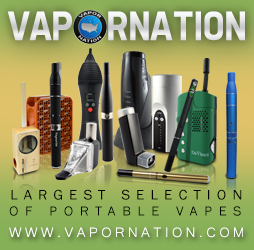Cloth menstrual pad – china Mortar Pump EZJ – Sump Pump EVM manufacturer

History Through the ages women have used different forms of menstrual protection. Women often used strips of folded old cloth (rags) to catch their menstrual blood, which is why the term “rags” was used to refer to menstruation. Disposable menstrual pads appear to have been first commercially available from around 1888 with the Southall’s pad. More widely successful disposable menstrual pads had their start during the first world war, when French nurses used Kimberly-Clark’s wood pulp bandages as a menstrual pad that could be thrown away after use. Kotex’s first advertisement for products made with this wood pulp appeared in 1921. Until the birth of disposable pads, women used a variety of sewn or makeshift pads made from a variety of fabrics, often leftover scraps, to collect menstrual blood, although some women have used anything absorbent, including grass to collect menstrual blood. Fabrics could generally be washed and used again. Some women, mostly ones living in rural areas or from a low socio-economic status, did not use anything to collect menstrual blood. When disposable pads were introduced, they were too expensive for many women to afford. When they could be afforded, women were allowed to place money in a box so that they would not have to speak to the clerk and take a box of Kotex pads from the counter themselves. It took several years for disposable menstrual pads to become commonplace.
However, they are now used nearly exclusively in most of the industrialized world. Cloth menstrual pads made a comeback around 1970. With the number of cloth pad manufacturers and online communities devoted to this increasing in the 1990s and the early 2000s, they appear to be gaining popularity. In underdeveloped countries, reusable or makeshift pads are still used to collect menstrual blood. Current use The majority of commercially available pads are manufactured by work-at-home moms or small businesses and can be purchased through some health food stores, specialty stores, and via the Internet. They are available in a range of lengths and thicknesses, similar to disposable pads, with longer pads for night use and thinner and shorter pads for light use. Some manufacturers will allow the buyer to select the fabrics, shape and size of the pad so that they can be custom made to fit an individual woman and be as efficient as possible. Some women make their own cloth menstrual pads.
These pads range from folded wash cloths to pads similar to the cloth menstrual pads available commercially. Cloth menstrual pads may be hand or machine washed, and then dried on a clothes line or in a clothes dryer, depending on the instructions from the manufacturer. (Different fabrics require different care methods.) Some women choose to rinse out their pads in cold water before putting them in the wash with their other clothing. Others do not rinse, but put the soiled pads straight into the wash. When changing cloth menstrual pads away from home, some women place the soiled pads into a waterproof or Ziploc bag to keep them from drying out and to contain or prevent odor and then wash the pads when convenient. Stains sometimes occur. However, this is limited if the pads are rinsed out or soaked in cold water immediately after use. Some women prefer darker colored fabrics which do not show stains as much as light colored fabrics do. Causes of staining include allowing the blood to dry on the pad and using hot water when washing the pad. Drying cloth pads in sunlight can help to fade stains.
The fabrics used range from 100% natural fibres to 100% synthetics. Some commonly used fabrics include terrycloth, cotton, silk, hemp, and Gore-Tex. Specialty fabrics such as hemp, bamboo terry, bamboo velour, soy french terry, wool interlock and polyurethane laminate (PUL). PUL may be purchased from online nappy/diaper supply stores. Some styles of cloth menstrual pad have a waterproof layer to help prevent the pad leaking through while other styles of cloth pad may rely on more layers of absorbency and not include waterproofing. Wool can also be used as a natural, breathable backing that provides leak protection. Perceived advantages and disadvantages Advantages Cloth menstrual pads are environmentally friendly and do not contribute to landfill as they are reusable and do not come in or contain plastic packaging. When cloth menstrual pads wear out (after years of use), those made from natural materials can be composted whereas disposable sanitary napkins made from synthetic materials cannot be recycled or composted. Fewer chemicals are used in the cloth compared to disposable menstrual products.
They create less overall waste compared to disposable menstrual products as they can be made from reused materials, including old pillow cases and towels. Some cloth pads use hemp as the absorbent core which is more environmentally friendly to grow when compared with cotton or wood pulp. Organic options, such as pads made of organic cotton grown without pesticides and chemicals, are available. In the long term, it is less expensive to buy and produce cloth menstrual pads compared to disposable menstrual products. They can be made by hand for little or no cost. Cloth menstrual pads are highly customizable. While less convenient than disposables, they are still convenient as they can simply be cleaned in the washing machine. Cloth menstrual pads are less likely to cause rashes, contact dermatitis, as well as helping women afflicted with certain types of vaginitis. Women with sensitive skin and allergies may find cloth pads to be more comfortable against their skin, particularly cloth pads made of undyed organic cotton. They do not use adhesive. Cloth menstrual pads reduce the scent of menstrual blood on the cloth pad. As they are more breathable than the average disposable sanitary pads, they carry less odor. Cloth menstrual pads, like all menstrual pads, remove the risk of TSS associated with tampons. Disadvantages Washing reusable pads requires water. The desire to reuse must be balanced against any local need to conserve water. Also, it is important that the water used to clean pads be disposed of appropriately. Even “biodegradable” soaps take a long time to break down. Cloth menstrual pads are generally more time consuming due to the need to wash, dry, and care for the pads. Special care may need to be taken if the user has a Candidiasis infection (i.e. yeast infection).
Once the infection is treated, the cloth menstrual pads may need to be sanitized in order to prevent reinfection. Initial cost for reusable menstrual products is typically higher per pad than for disposables, although savings over time make them more economical. See also Sanitary napkin Menstrual cup Lunapads Sckoon Organics References ^ Salon Mothers Who Think | Go with the flow ^ a b What did American and European women use for menstruation in the past? at the Museum of Menstruation and Women’s Health ^ Knitted Norwegian Pads at the Museum of Menstruation and Women’s Healllth ^ Ads for early Southall’s disposable menstrual pads in the U.K. at MUM ^ Ads for Hartmann’s menstrual pad (1890s) at the Museum of Menstruation and Women’s Health ^ a b Inside the Museum of Menstruation 6 ^ What European and American women in the past wore when menstruating, at the Museum of Menstruation and Women’s Health ^ From the Collection of MUM: Washable Menstrual Pads and Underpants ^ Letters: Period pain in Zimbabwe – Salon ^ Bleed With Pride: Make-It-Yourself Menstrual Pads : TreeHugger ^ Microsoft Word – 4126C0AA-056B-204951.doc ^ a b c d Cloth Menstrual Pads ^ What items can’t be recycled at the kerbside Real Recycling collection? ^ http://www.eya.ca/files/attachments/sp101booklet.pdf ^ http://web.archive.org/web/20070723153306/http://www.thehia.org/hempfacts.htm ^ Cloth Menstrual Pads External links Museum of Menstruation Categories: Feminine hygiene
We are high quality suppliers, our products such as china Mortar Pump EZJ , Sump Pump EVM manufacturer for oversee buyer. To know more, please visits Sand Pump.









